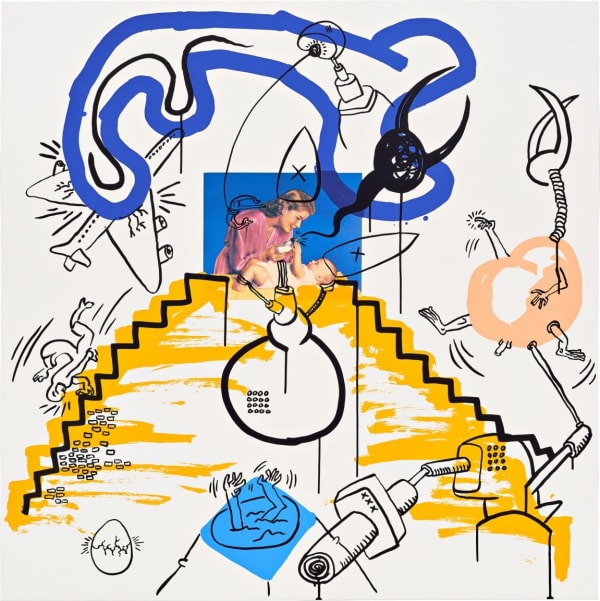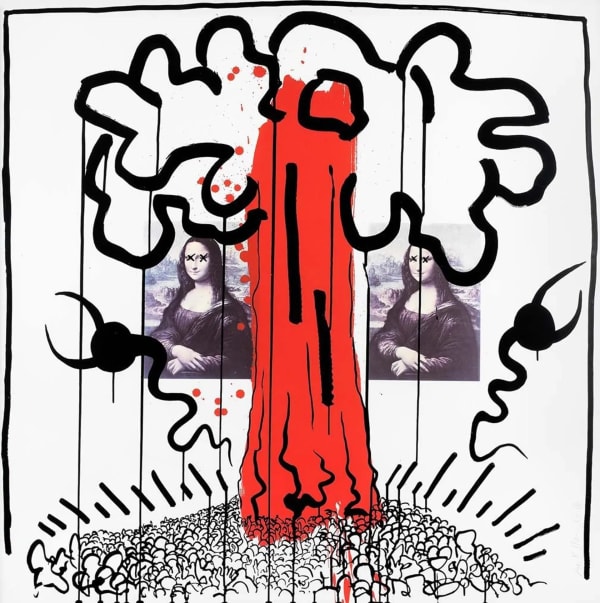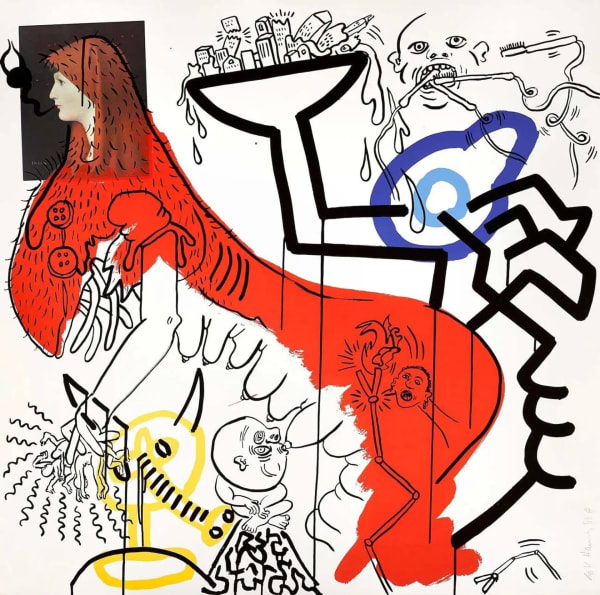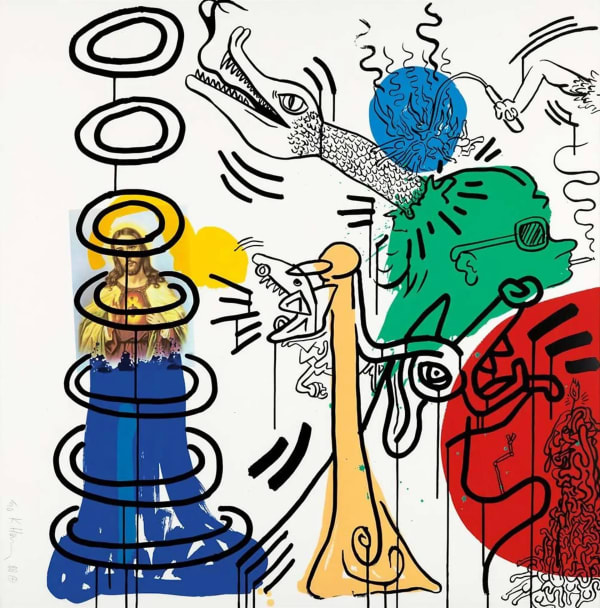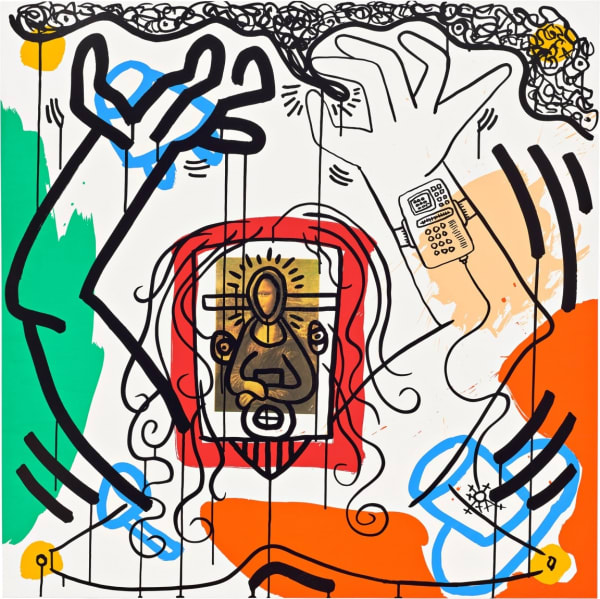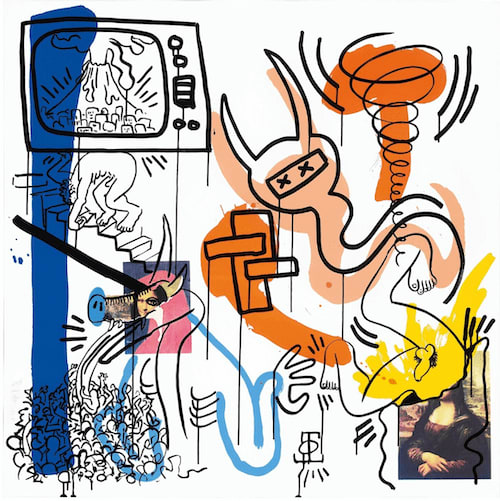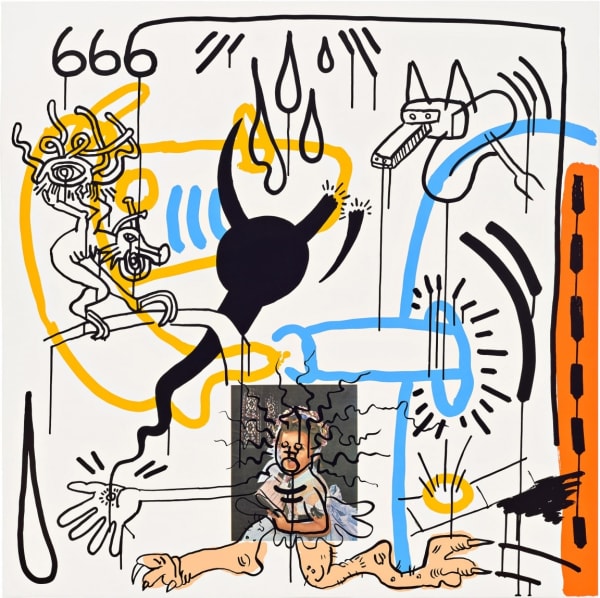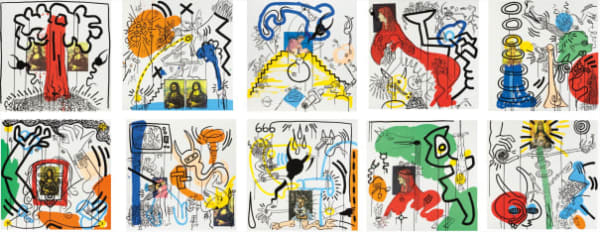
Keith Haring
96.5 x 96.5 cm
Keith Haring's Apocalypse series is a significant body of work that reflects the artist's response to the social and political climate of the 1980s. Created between 1988 and 1989, this series was one of Haring's final artistic endeavors before his untimely death due to AIDS-related complications in 1990.
The Apocalypse series comprises a collection of artworks that express Haring's concerns about various global issues, including the AIDS crisis, nuclear war, environmental degradation, and societal turmoil. These works showcase Haring's characteristic bold lines, vibrant colors, and iconic figures, but with a darker and more introspective tone compared to some of his earlier, more celebratory pieces.
In these artworks, Haring employs his signature visual vocabulary of radiant babies, crawling figures, and anthropomorphic characters engaged in symbolic and often apocalyptic scenes. The series embodies a sense of urgency and serves as a visual commentary on the pressing issues of the time, highlighting the looming fears and anxieties prevalent during the late 1980s.
Throughout the Apocalypse series, Haring explores themes of mortality, the fragility of life, and the devastating impact of the AIDS epidemic on individuals and society. The artworks convey a sense of foreboding and reflection, depicting a world grappling with existential concerns and existential threats.
Despite the somber and forewarning nature of the series, Haring's art maintains a sense of hope and resilience. His use of bold, dynamic lines and vibrant colors within the "Apocalypse" series evokes a sense of vitality and determination amid adversity, reflecting Haring's belief in the power of art to raise awareness and provoke contemplation about pressing societal issues.
The Apocalypse series stands as a poignant and introspective chapter in Keith Haring's artistic legacy, demonstrating his ability to use art as a means of social commentary and activism, even in the face of profound personal challenges. These artworks continue to resonate with audiences, serving as a reminder of Haring's dedication to using his art as a platform to address critical issues and advocate for positive change in the world.
-
 Keith HaringApocalypse 3 (Littmann PP. 102), 1988
Keith HaringApocalypse 3 (Littmann PP. 102), 1988 -
 Keith HaringApocalypse 1 (Littmann PP. 101), 1988
Keith HaringApocalypse 1 (Littmann PP. 101), 1988 -
 Keith HaringApocalypse 2 (Littmann PP. 101), 1988
Keith HaringApocalypse 2 (Littmann PP. 101), 1988 -
 Keith HaringApocalypse 4 (Littmann PP. 102), 1988
Keith HaringApocalypse 4 (Littmann PP. 102), 1988 -
 Keith HaringApocalypse 5 (Littmann PP. 105), 1988
Keith HaringApocalypse 5 (Littmann PP. 105), 1988 -
 Keith HaringApocalypse 6 (Littmann PP. 105), 1988
Keith HaringApocalypse 6 (Littmann PP. 105), 1988 -
 Keith HaringApocalypse 7 (Littmann PP. 106) , 1988
Keith HaringApocalypse 7 (Littmann PP. 106) , 1988 -
 Keith HaringApocalypse 8 (Littmann PP. 106), 1988
Keith HaringApocalypse 8 (Littmann PP. 106), 1988 -
 Keith HaringApocalypse 9 (Littmann PP. 109) , 1988
Keith HaringApocalypse 9 (Littmann PP. 109) , 1988 -
 Keith HaringApocalypse (Littmann PP. 98-109), 1988
Keith HaringApocalypse (Littmann PP. 98-109), 1988
Join our mailing list
* denotes required fields
We will process the personal data you have supplied in accordance with our privacy policy (available on request). You can unsubscribe or change your preferences at any time by clicking the link in our emails.
This website uses cookies
This site uses cookies to help make it more useful to you. Find out more about cookies.
